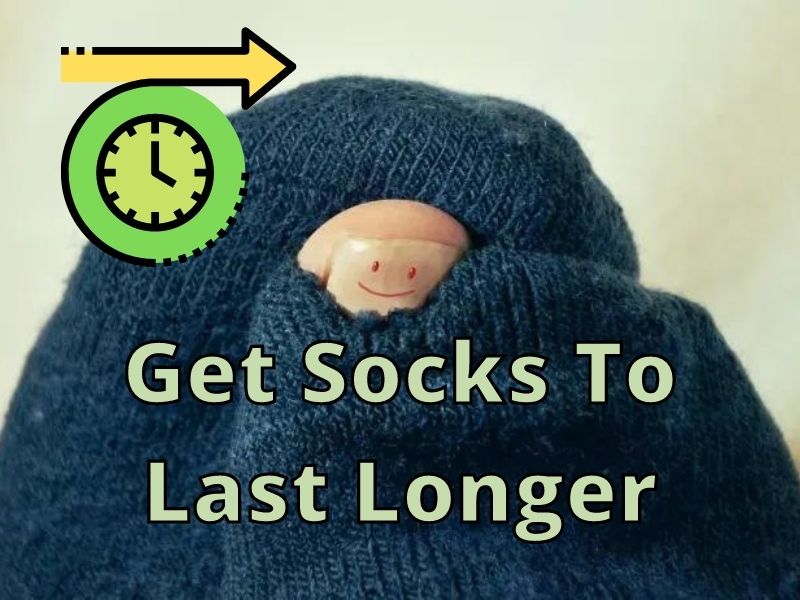When I find a hole in my sock, I find it occurs in a few different places. The heels, once in a while, the ball of my foot, once in a while, and my toes more often. Some of my best socks meet an early retirement because of holes in the toe section.
To get your socks to last longer, make sure that your nails are cut regularly and that they are filed smooth. Moisturizing your feet, ensuring shoes fit well, and sock care will also help extend the life of your socks.
My favorite socks tend to last longer when I can cut and file my toenails. There’s a natural wearing effect on the sock that occurs while we walk, and I’ve noticed that most socks last a lot longer if I take care of my nails.
Cut Your Nails Properly
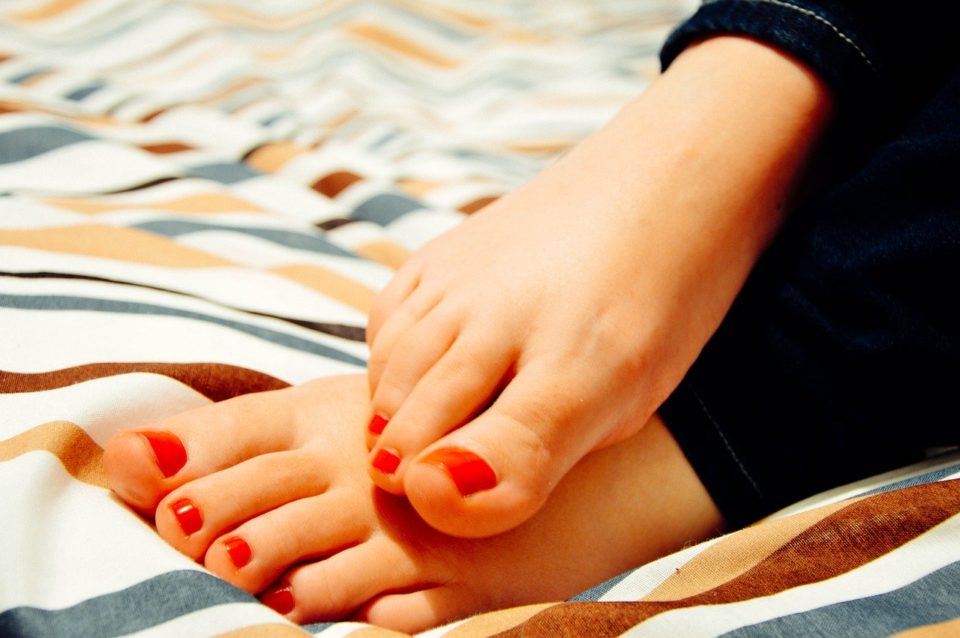
When I cut my nails on my toes now, I am careful to cut straight across. I do this because my nails started to curve into my toe and cause some discomfort. Now that I cut straight across my toenails, the nail lays flatter.
When cutting my fingernails, I’ve always been fine cutting around in a curved pattern, but toenails can start to curve into the toe, causing ingrown toes nails, and other problems. So I cut in a straight line with large size nail clippers.
I check to make sure the entire length of the nail is about as straight as it can be without cutting too close to the skin. This allows the outer edges of the nail to stick out a bit further than the midsection of the nail, helping it not to curve into the skin.
If you look at the painted toenails picture above, you’ll notice most of the nails are cut straight across. The nails are not rounded at the left or right edge of the nail.
If the nail is very close to the skin, it might be a problem for those who have issues with ingrown toenails. The key is to make sure the nail doesn’t curl into the toe and cause problems and to make sure that it isn’t sharp so it won’t cut your socks.
If your toenails are sharp, especially now that they are cut straight across, they are more likely to cut into your socks. That’s where a nail file comes in handy.
File Your Nails
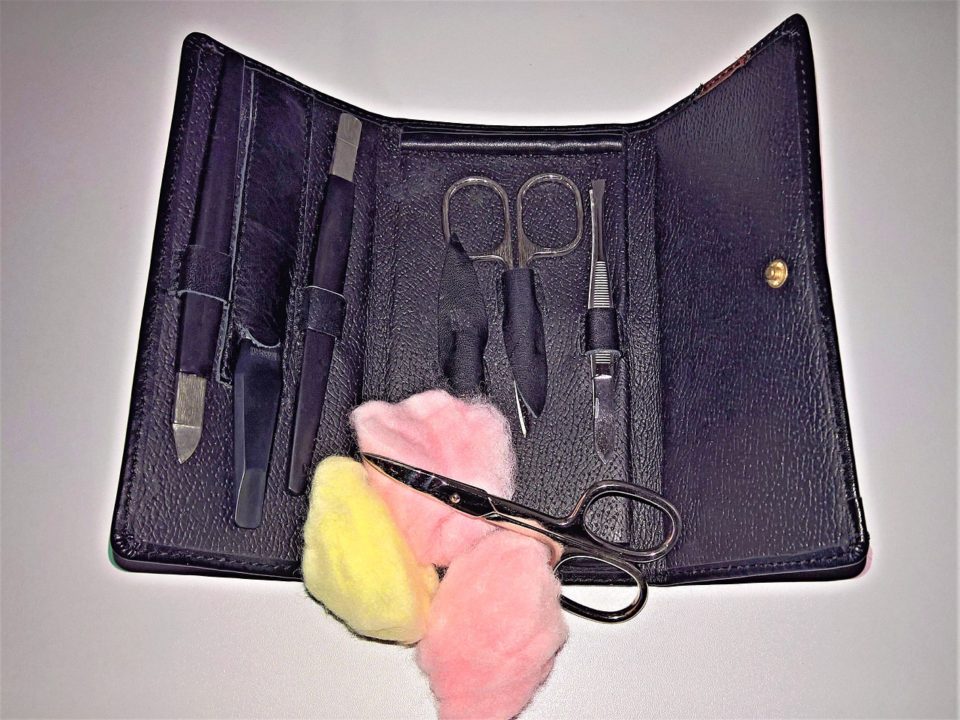
When you cut your nails, they tend to be sharp and sometimes jagged. The left and right edge can come to a point the can catch on your sock and start to create a hole. That’s why many people tend to round the corners of their toenails.
Unfortunately, round corners can lead to nail issues with some. So using a nail file to dull the edge and corners of the nail is a preferred method.
One great reason to file your nail is the additional benefit of finding pieces of the nail that are sticking out a bit. These small bits of the nail can snag on your sock and some can lead to your nail starting to split. Filling can help you find and remove any sagging sections.
Moisturize You Feet
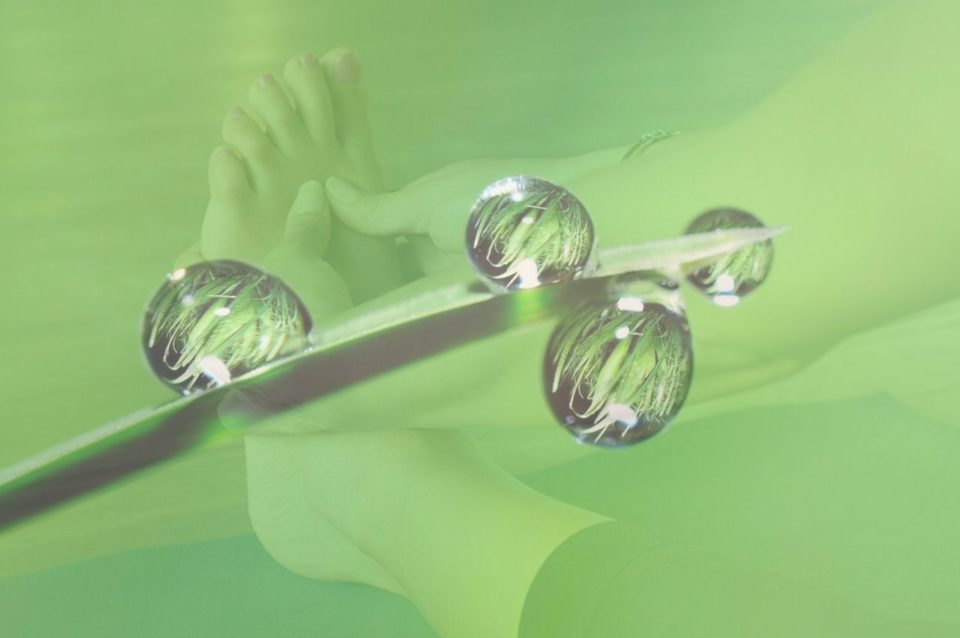
If you’re like me, you might forget to hydrate as often as your should. After a while, your feet can start to get dry and develop hard flaky skin. Dry skin can be part of the reason your socks get holes.
The friction that is created from walking and rubbing against your dry skin can help speed up the wearing process. When you moisturize your skin the skin becomes smooth and more pliable.
There are many products that are helpful for moisturizing skin. If you have more severe dry and cracked skin, make sure to get a moisturizing balm that can handle this type of skin. Foot moisturizing care will help reduce rubbing when you are using your shoes for longer periods.
Your feet will better handle conditions where friction is common, such as walking, running, and hiking. Your socks will be less impacted by friction from your skin and last longer.
Check Your Shoes
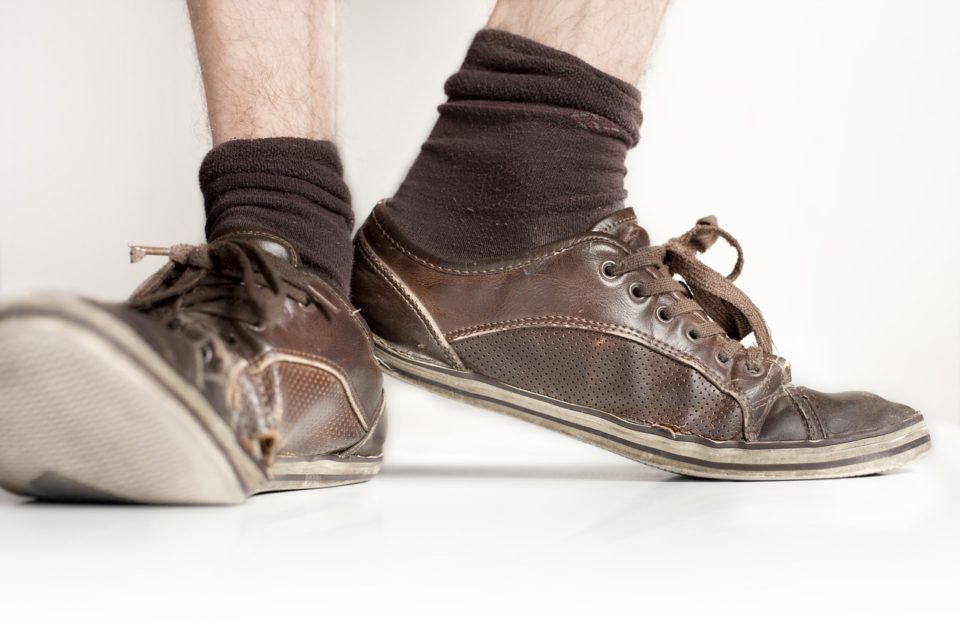
Shoes can have an impact on the life of your socks. Soles that are worn too much on one side or the other can create more pressure on a certain area of your foot, leading to more wear in that area of your sock.
If you notice your socks are always wearing in the same area, check your shoe to see how the sole is wearing. You may want to replace the sole if possible or get an insole that may provide a more even platform (article) for your foot to walk on.
Sometimes just tightening your shoes laces a bit more or loosening them can help with wear on your socks because your foot isn’t rubbing against your shoe as much as it was before. Check your laces to see if they are laced snug, but not tight.
If you have too much room in your shoe, consider adding some insoles so it is snug. If you have too little room in your shoe, consider trying to stretch your shoe, adding insoles (article), or replacing them to get more wear from your socks.
Some people have high and low arches (article) and this can impact sock wear. Your foot may need to be adjusted to help your foot walking evenly.
If you are wearing high heels, you’ll likely feel the extra pressure exerted on your foot and the extra wear that it causes to your socks. If you go hiking you’ll also notice exactly where your shoes are rubbing your feet. Sometimes you can’t do anything to prevent rubbing, but if you can you’ll have socks that will last longer.
Get High Quality Socks
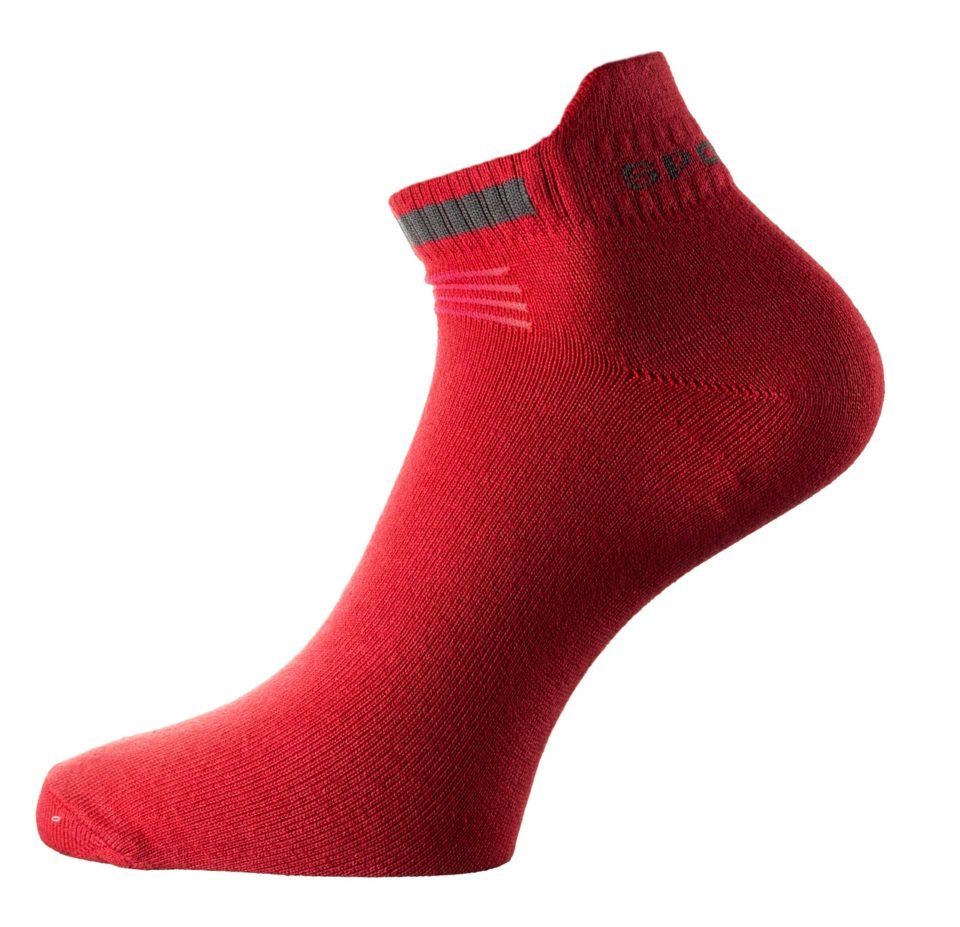
One way to prevent throwing away a lot of socks is to get socks that are made to last. These are made from materials that are tough and long-lasting (article). Some types of materials to consider are modal, mohair, bamboo, nylon, olefin, and polyester.
In my experience, socks can last for about 6 – 12 months if worn regularly. So if you wear your socks 3 times a week, expect them to last at least 6 months. If they don’t, try to figure out what happened, and determine if quality has something to do with it.
If you will be doing a lot of walking, running, or hiking, it makes sense to get some good-quality socks. Many socks are made of cotton. While these are fine for walking around the store, they are likely to wear sooner than other tougher materials.
Looking at the mixture of the materials that the sock is made of will help you determine the likelihood of its durability. If it’s 50% cotton and 50% polyester it will likely last a shorter time period than a 100% polyester sock.
Thicker socks may last longer than thinner socks. They have more material and can cushion the foot a bit more, providing some protection against rubbing. But each circumstance is different and finding a quality sock is one way to ensure it lasts a while.
Washing and Drying
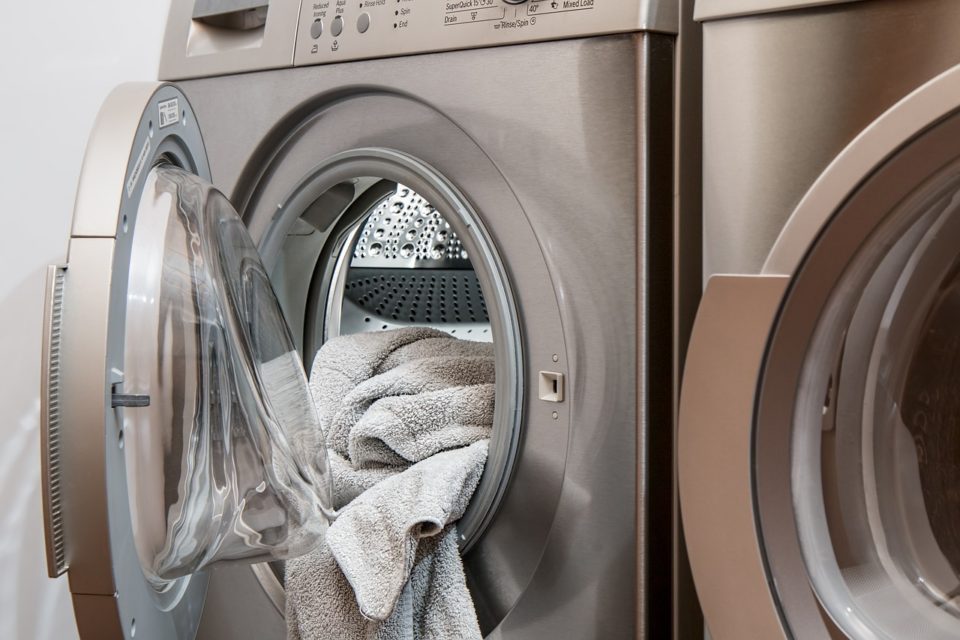
As with all clothing, socks are prone to wear during the washing and drying process. If you want to make sure your socks last longer, you could air hang your socks to dry or put the dryer temperature on a lower heat setting.
All the lint collected in the dryer is from normal wear as you use your clothing each day and from the wear that clothes undergo through the washing and drying process. Gentle washing and drying will help socks and other clothing stay in better condition.
Unless you have dirty or smelling clothing, a gentle wash is all you need. If your socks are mostly polyester, you can air hang them and they should dry fairly quickly.
Darn Your Socks
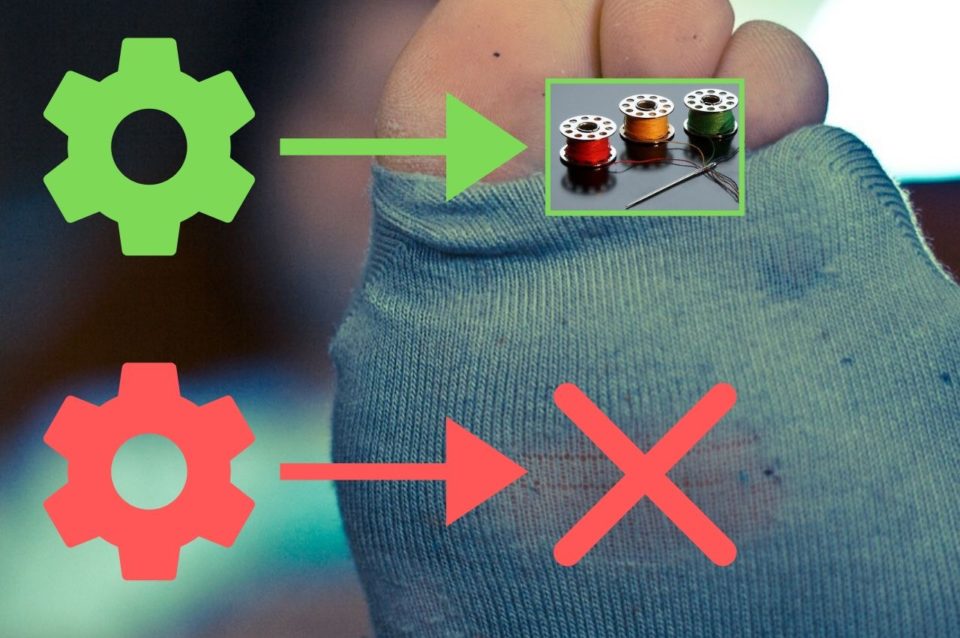
If you don’t mind spending 5-10 minutes sewing holes in your socks, you can save your favorite socks and make them last a lot longer. Although if the material is worn away, you will need to take a lot longer to patch up the area. It can be done with some patience. (See video)
If you don’t want to spend that much time repairing your socks, I recommend trying to sew up holes in your sock first. This can be done with much more success and less time, but you will still need to have a bit of patience to ensure you’re accurately sewing.
If you watched the video, you can see it doesn’t take too long to sew up a hole in your sock. Trying it out is probably the hardest part, but if you do you might find that sewing is something you enjoy doing.
Holes can be easily patched up because all the material is usually still in place. You just need to close the gap in the sock that your toes have created.
Sewing up the holes in your socks may take a few times to get used to, but soon you’ll be a sock sewing expert. If you can’t see yourself doing any sewing, then you can try a not sewing method, such as using glue and cloth. (See video)
Once your sock is patched up, you can enjoy using and feel the pride of recycling and accomplishing a new task that might have posed a challenge. You will likely figure out how the hole was created and be able to address the issue with your feet or shoes to help your socks last longer.
Conclusion
Socks worn regularly can last for about a year if they are durable. By taking care of your feet and insuring your shoes fit properly, you can ensure your socks last for longer. Remember that clipping and filing your toenails is likely the best way to ensure your sock lasts longer.
Wear will occur over time, but moisturizing your feet and using good-fitting shoes will lessen the wear. A quality pair of socks will help with durability and if a hole does occur you can always sew it up to get many more months of use.
Thanks for visiting Helpshoe.com

